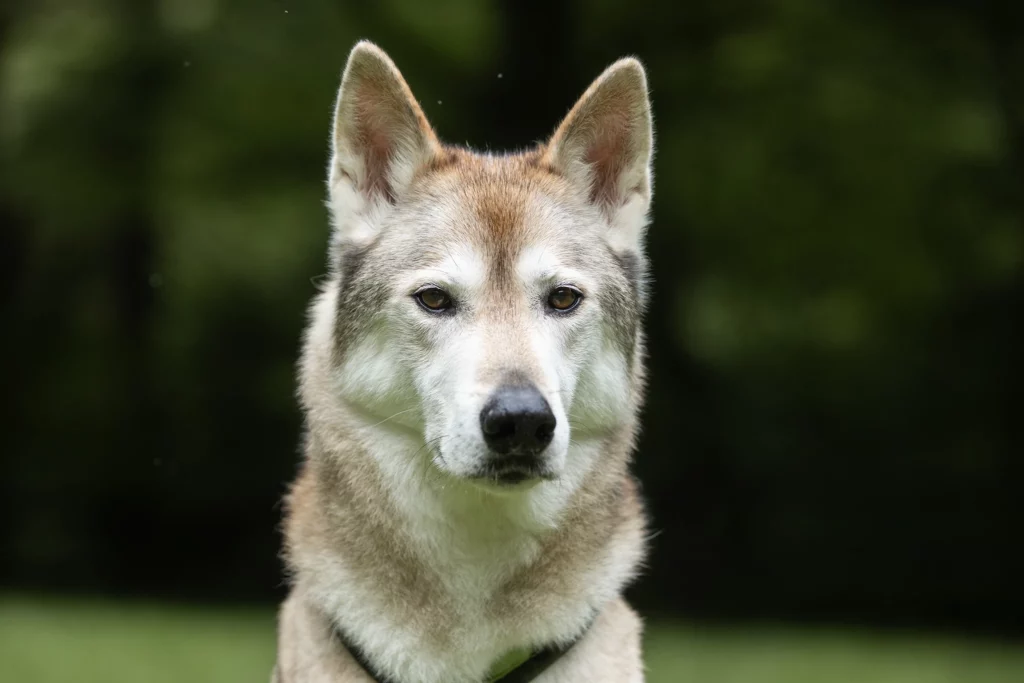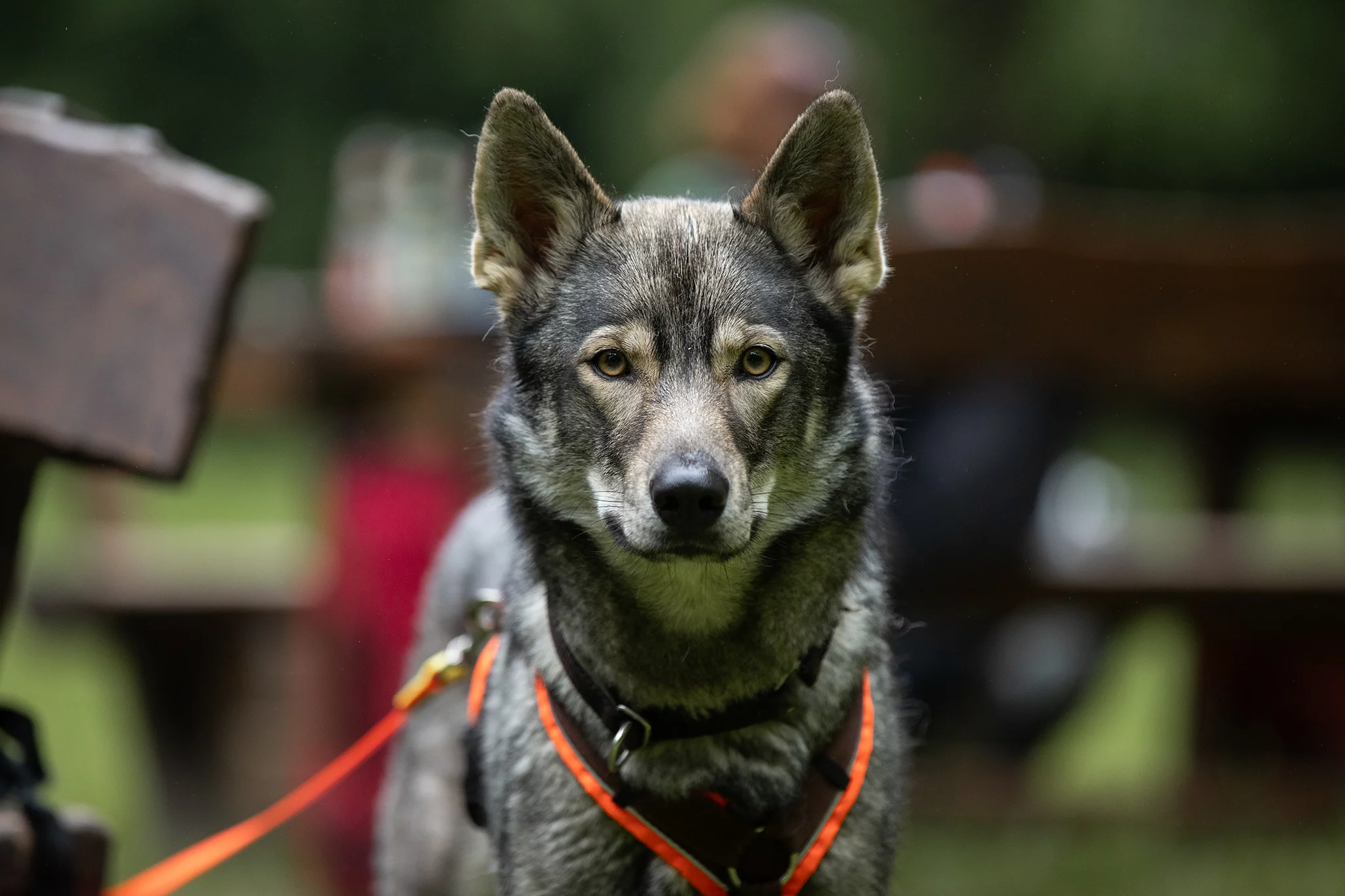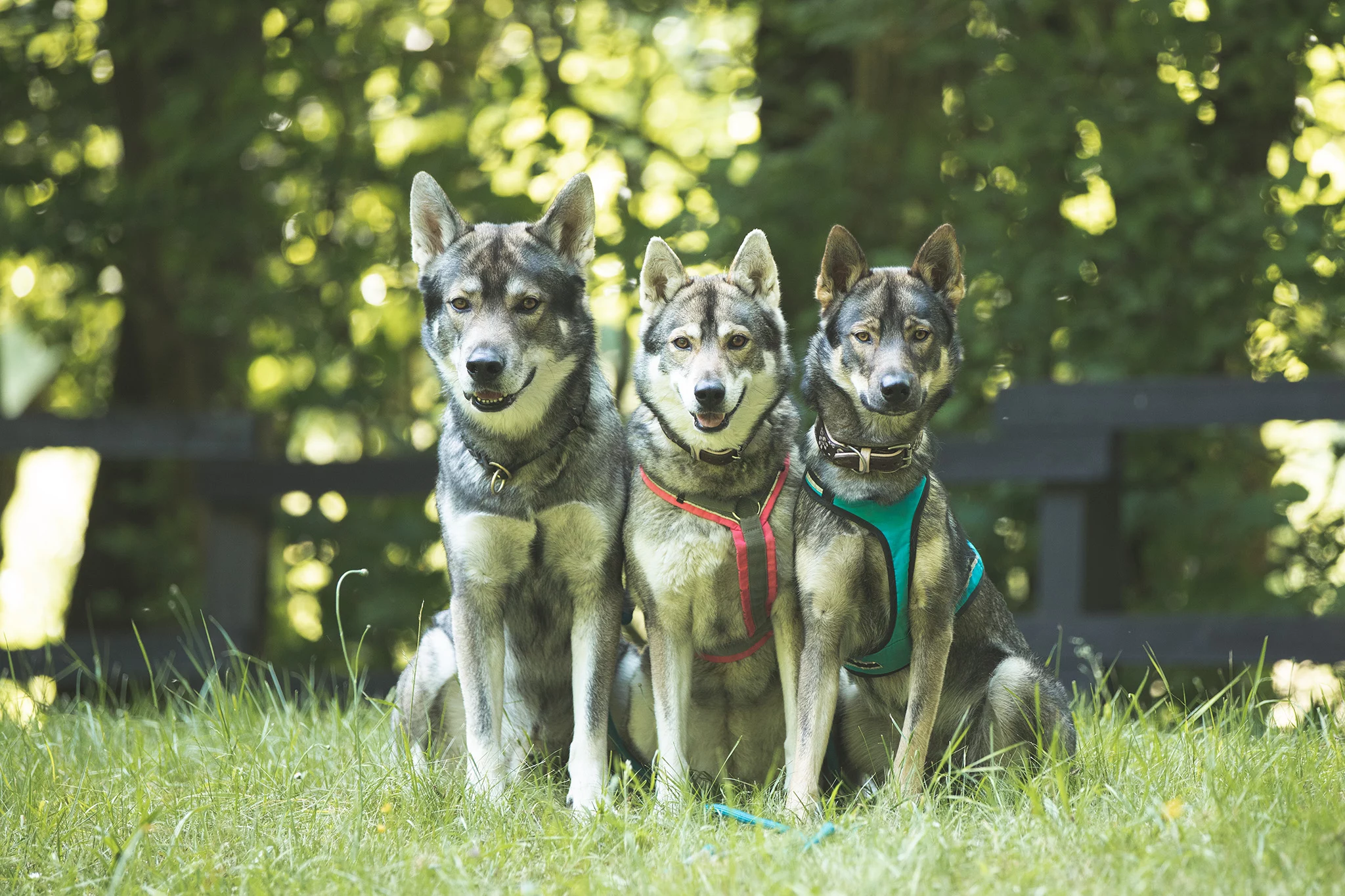Height
61cm – 74cm

The Tamaskan originated in the United Kingdom, although some sources also claim Finland.
The founder of the breed was Lynn Hardey.
Hardey discovered the Polar Speed sled dog kennel in Lapland while travelling in Finland in 2004.
The owner of Polar Speed, Reijo Jääskeläinen, was then working on his own wolf-like breed for film and television work by crossing Czechoslovakian wolfdogs and wolfdog mixes with his purebred Siberian huskies.
In 2005, Lynn Hardey, who until then had mainly bred Utonagan and Northern Inuit, imported a female from the Polar Speed Kennel and reserved five more suitable animals for her breeding programme.
In February 2006, she founded the Tamaskan Dog Register, renamed her breeding dogs „Tamaskan Dog“ and became the first kennel for Tamaskans under the kennel name Blustag UK.
The pedigrees and the wolf content behind the imported dogs were deliberately concealed and the lie of the wolf-like dog without wolf content became the advertising image of the Tamaskan.
In 2006, the first Tamaskan male was exported to Germany and further Tamaskans found their way to Sweden, France and the Netherlands.
On 16 July 2009, the first litter was born at the German breeder „Tamaskan vom Münsterland“ from the mating of Tamaskan bitch Summer (Blustag Little Sunshine) and the Saarloos wolfhound Bobbi (Djoser van Rijneckerhof).
Although Bobbi was a Saarloos, at the time of the litter he was advertised as a wolf-free Tamaskan under the name „Blustag Apache“. The truth about the origin of the breed and the wolf content has been known since around 2010, but the claim of a wolf-free wolfalike persists to this day.
Nowadays, most Tamaskan breeders distance themselves from the original breeding of the breed.
While wolfhounds and sled dogs were originally used, there are now a variety of other breeds in the Tamaskan.
Among others, white, German and Dutch shepherd dogs, a West Siberian Laika, several Groenendael and a Labrador mongrel have been used.
The Tamaskan varies in temperament from dog to dog due to the different breed compositions, and even within a litter there are sometimes massive differences. It is therefore important to be well informed about the pedigree of a puppy.
The breed standard describes it as an intelligent, attentive and active dog with a friendly and good-natured character.
Tamaskans are affectionate and form a strong bond with their owners, which is why many of them tend to develop separation anxiety and do not tolerate being alone for long periods of time.
These dogs are intelligent, sometimes stubborn and need regular mental and physical exercise.
Suitable activities are highly dependent on the breed and the individual character of the dog.
The hunting instinct should not be underestimated, especially in dogs with a high proportion of Nordic breeds.

The Tamaskan is a large, athletic dog with an alert gaze and a wolf-like appearance.
The visual differences between males and females are clearly recognisable.
It has a well-muscled body, erect triangular ears and yellow to brown eyes.
In movement, the Tamaskan is graceful and light-footed, with a smooth, effortless gait.
It has well-proportioned body features that epitomise strength, agility and stamina, similar to a wolf.
The bushy tail is carried straight and reaches to the heel.
The coat consists of a stocky topcoat and a soft undercoat, summer and winter coats are visually different.
According to the breed standard, only agouti in all its shades is officially recognised in order to preserve the wolf look.
Due to the regular cross-breeding of different dogs with characteristics that do not correspond to the breed standard, there are also a large number of Tamaskans that deviate from the standard in terms of appearance.
Dogs in undesirable colours such as black, white, sable or brindle are just as common as dogs with very short or long coats, blue eyes or curly tails.

The Tamaskan is basically a very robust breed.
Some diseases that occur in the breed, such as DM, are testable and therefore easy to control.
An examination for HD and ED is also important, as with almost all large dog breeds.
In addition, an eye examination should be carried out before each litter to rule out diseases such as cataracts and goniodysplasia.
An increasingly common hereditary disease is cryptorchidism.
Tamaskans do not normally require extensive grooming.
They should only be brushed regularly during the shedding period to remove loose hair and prevent matting.
02.01.2023
Tamaskan22.01.2024
Tamaskan08.07.2019
Tamaskan02.01.2023
Tamaskan11.03.2020
Tamaskan